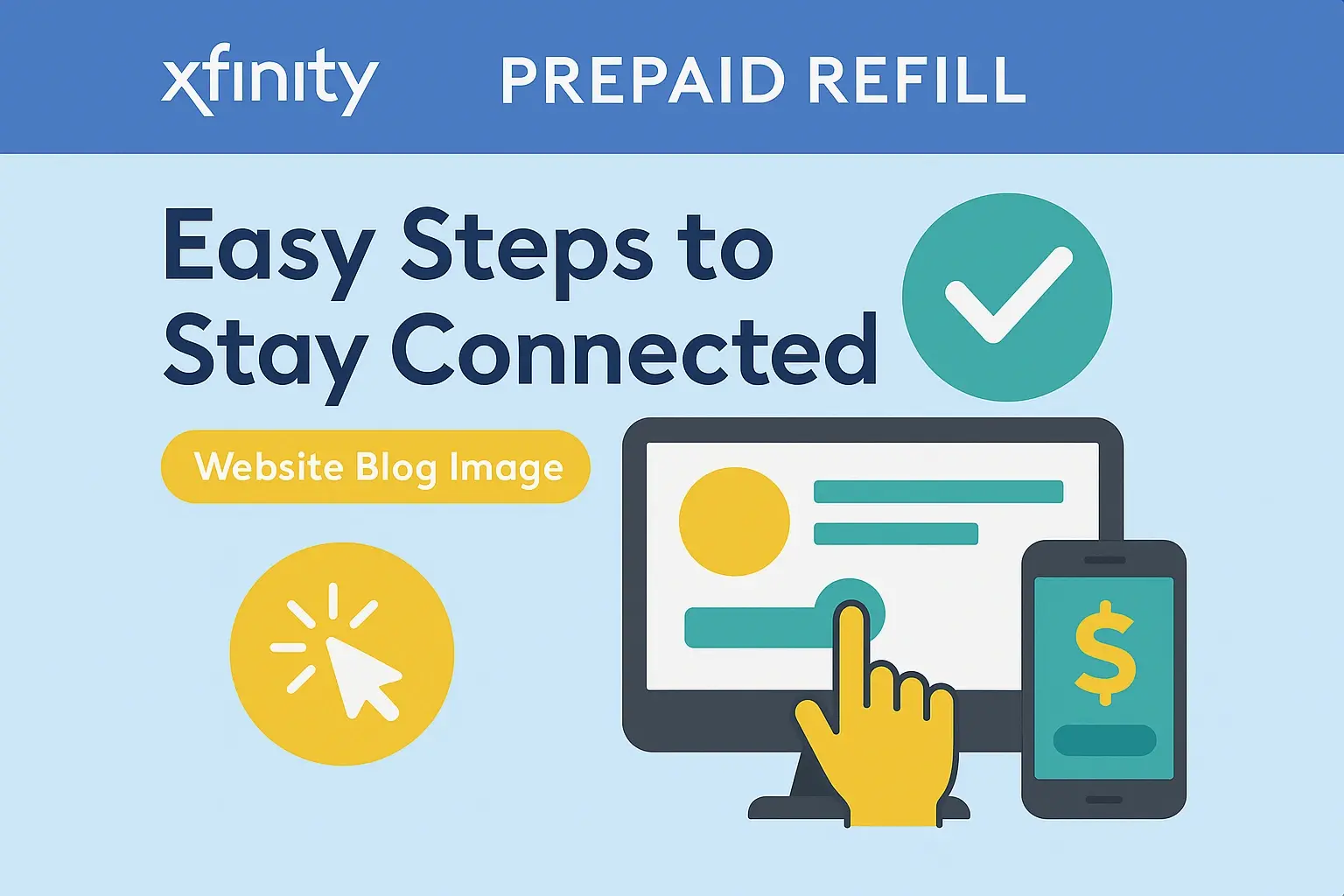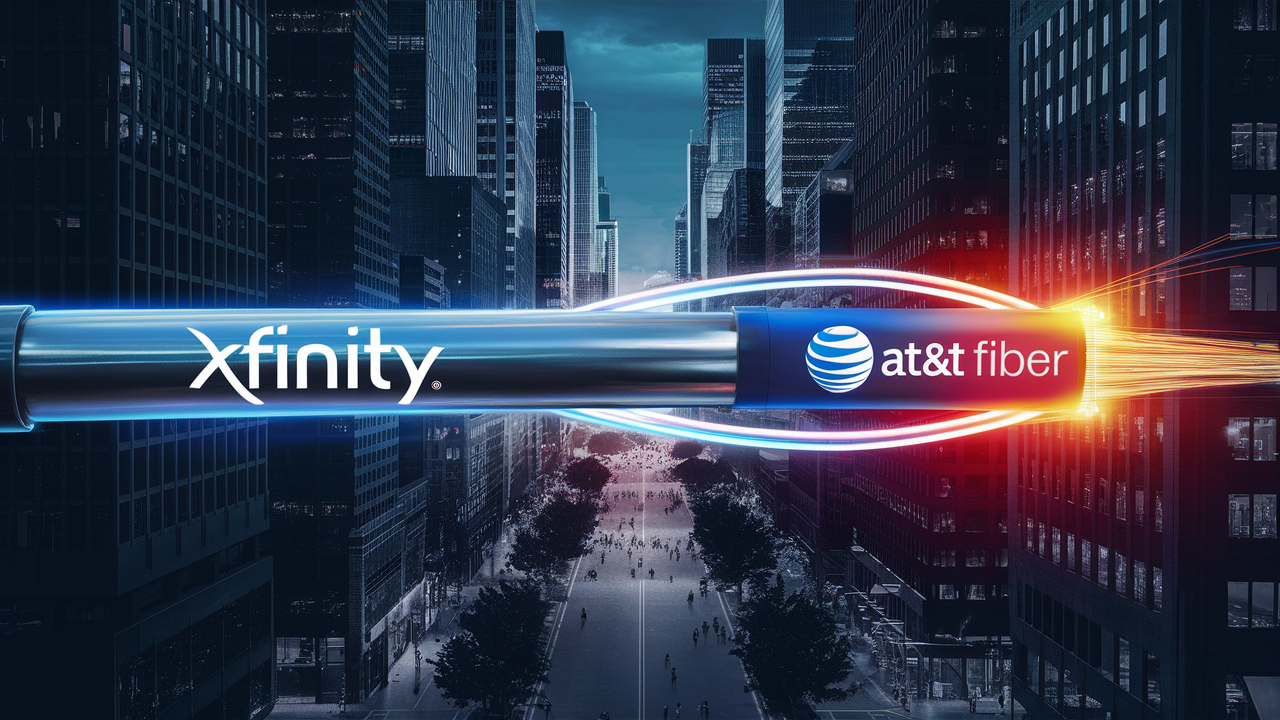How to Access and Connect to Xfinity Wi-Fi Networks?

Understanding Xfinity Wi-Fi Networks
Accessing and connecting to Xfinity Wi-Fi is a fundamental need for millions of households and mobile users. Whether you're at home enjoying your private network or on the go utilizing public hotspots, understanding the process ensures seamless connectivity. This comprehensive guide will demystify how to access and connect to Xfinity Wi-Fi networks, covering everything from locating your home network details to navigating public hotspots and troubleshooting common issues. By the end of this article, you'll be equipped with the knowledge to confidently manage your Xfinity Wi-Fi experience.
Types of Xfinity Wi-Fi Access
Xfinity offers two primary ways for its customers to access Wi-Fi: their private home network and a vast network of public Xfinity Wi-Fi hotspots. Each serves a distinct purpose and requires a slightly different approach to connect.
Xfinity Home Wi-Fi
This is your personal, secure Wi-Fi network provided by your Xfinity Internet service. It's broadcast from your Xfinity modem/router (often referred to as a gateway). This network is password-protected and intended for your exclusive use by devices within your home. It offers the highest speeds and greatest reliability for your daily internet activities, from streaming and gaming to working from home. In 2025, Xfinity continues to upgrade its gateway technology, offering faster speeds and improved Wi-Fi coverage within homes, with many households now experiencing gigabit speeds.
Xfinity Wi-Fi Hotspots
Xfinity provides a widespread network of public Wi-Fi hotspots located in various outdoor and indoor public spaces, such as parks, downtown areas, transit stations, and some retail locations. These hotspots are available to Xfinity Internet subscribers as a perk, allowing you to save on mobile data usage and stay connected when you're away from home. As of 2025, Xfinity boasts over 20 million hotspots nationwide, making it one of the largest public Wi-Fi networks in the United States. This service is particularly valuable for users with limited mobile data plans or those who frequently travel.
Connecting to Your Xfinity Home Wi-Fi
Connecting to your personal Xfinity Home Wi-Fi is typically straightforward, but you'll need a few key pieces of information. The process involves identifying your network name (SSID) and its password.
Finding Your Network Name (SSID)
The SSID, or Service Set Identifier, is the name of your Wi-Fi network that appears in the list of available networks on your devices.
- Check Your Xfinity Gateway: The most common place to find your default SSID is on a sticker attached to your Xfinity modem/router. This sticker usually displays both the network name and the default password. Look for labels like "Wi-Fi Name (SSID)" and "Wi-Fi Password."
- Xfinity App: If you have the Xfinity app installed on your smartphone or tablet, you can log in to your account. Navigate to the "Internet" section, and you should find information about your Wi-Fi network, including its SSID and password. This is often the easiest method if the sticker is missing or illegible.
- Xfinity Website: Log in to your Xfinity account on the Xfinity website. Similar to the app, you can usually find your network name and password within your account settings, often under the "My Account" or "Internet" sections.
- Default SSIDs: Xfinity gateways often have a default SSID that might include "Xfinity" and part of your account information or a serial number. For example, it might look like "XfinityWiFi_XXXX" or "XfinityXXXX."
It's highly recommended to change the default SSID and password to something unique and secure to prevent unauthorized access. You can do this through the Xfinity app or by accessing your gateway's administration page via a web browser.
Finding Your Wi-Fi Password
The Wi-Fi password, also known as the security key or passphrase, is essential for authenticating your devices to your home network.
- On the Xfinity Gateway Sticker: As mentioned, the default password is usually printed on the sticker on your modem/router.
- Xfinity App: The Xfinity app is a convenient way to view and even reset your Wi-Fi password if you've forgotten it or want to change it.
- Xfinity Website: Your account portal on the Xfinity website will also allow you to view or reset your password.
- If You've Changed It: If you've previously changed your password and forgotten it, you can reset it through the Xfinity app or website. This usually involves logging into your account and navigating to the Wi-Fi settings. In some cases, you might need to perform a factory reset on your gateway, which will revert the Wi-Fi name and password back to their defaults.
Note: For security reasons, Xfinity has implemented a system where some Xfinity gateways also broadcast a secondary, public network called "XfinityWiFi." This is different from your private network. Ensure you are connecting to your private network (the one with your custom or default private SSID and password) for secure and high-speed access.
Connecting Laptops and Desktops
Connecting a laptop or desktop computer to your Xfinity home Wi-Fi is a standard procedure for most operating systems.
Windows 10/11:
- Click the Wi-Fi icon in the system tray (usually in the bottom-right corner of the screen).
- A list of available Wi-Fi networks will appear.
- Find your Xfinity network name (SSID) in the list and click on it.
- Click the "Connect" button.
- If prompted, enter your Wi-Fi password and click "Next" or "OK."
- Your computer will attempt to connect. Once successful, it will show "Connected" or "Connected, secured."
macOS:
- Click the Wi-Fi icon in the menu bar (usually in the top-right corner of the screen).
- A dropdown menu will appear showing available networks.
- Select your Xfinity network name (SSID) from the list.
- Enter your Wi-Fi password when prompted and click "Join."
- The Wi-Fi icon will turn solid when successfully connected.
Connecting Smartphones and Tablets
Connecting mobile devices is equally straightforward.
Android:
- Open the "Settings" app.
- Tap on "Network & Internet" or "Connections."
- Tap on "Wi-Fi."
- Ensure Wi-Fi is toggled ON.
- Your device will scan for available networks.
- Tap on your Xfinity network name (SSID).
- Enter your Wi-Fi password and tap "Connect."
iOS (iPhone/iPad):
- Open the "Settings" app.
- Tap on "Wi-Fi."
- Ensure Wi-Fi is toggled ON.
- Your device will scan for available networks.
- Tap on your Xfinity network name (SSID).
- Enter your Wi-Fi password and tap "Join."
Connecting Smart TVs and Gaming Consoles
Most modern smart TVs and gaming consoles also offer Wi-Fi connectivity. The exact steps vary by device, but the general process is similar.
- Smart TVs: Navigate to the TV's "Settings" menu, then look for "Network," "Internet," or "Wi-Fi." Select your Xfinity network from the list, enter the password, and confirm.
- Gaming Consoles (e.g., PlayStation, Xbox): Go to the console's "Settings" menu, find the network setup option, choose "Wireless" or "Wi-Fi," select your Xfinity network, and enter the password.
For devices that have an Ethernet port, a wired connection is often more stable and faster. If your Xfinity gateway is close to the device, consider using an Ethernet cable for optimal performance, especially for gaming and high-definition streaming.
Connecting to Xfinity Wi-Fi Hotspots
Xfinity Wi-Fi hotspots are a valuable resource for Xfinity Internet subscribers. They offer a way to stay connected without using your mobile data plan. Connecting to these public networks requires a slightly different approach than your home network.
Finding Xfinity Hotspots
Locating nearby Xfinity Wi-Fi hotspots is crucial for utilizing this service.
- Xfinity Hotspots App: This is the most convenient method. Download the "Xfinity Hotspots" app from your device's app store (available for iOS and Android). The app will use your device's location services to show you a map of nearby hotspots.
- Xfinity Website: You can also find a hotspot map on the Xfinity website. Log in to your account, and navigate to the "Hotspots" or "Find a Hotspot" section. This will display a map with available locations.
- Look for the Xfinity Logo: Many hotspots are clearly marked with Xfinity signage or logos.
The density of hotspots varies by region, with more concentrated in urban and suburban areas.
Connecting Via the Xfinity Hotspots App
The Xfinity Hotspots app simplifies the connection process significantly.
- Download and Install: Get the "Xfinity Hotspots" app from your device's app store.
- Log In: Open the app and log in using your Xfinity username and password.
- Automatic Connection: Once logged in, the app can be configured to automatically connect your device to available Xfinity Wi-Fi hotspots when you are in range. This is often the easiest and most seamless way to use the service.
- Manual Connection (if needed): If automatic connection doesn't work or you prefer manual control, the app can also guide you through the manual connection process by providing the network name and password.
Using the app ensures you're connecting to the legitimate Xfinity network and bypasses the need to manually enter credentials each time.
Manual Connection to Hotspots
If you prefer not to use the app or are on a device that doesn't support it, you can connect manually.
- Find the Network: On your device, go to Wi-Fi settings and look for networks named "XfinityWiFi."
- Select the Network: Tap on "XfinityWiFi."
- Enter Credentials: You will be prompted to enter a username and password. For Xfinity subscribers, this is typically your Xfinity account username and password.
- Accept Terms: You may need to accept terms and conditions or click through a portal page to complete the connection.
Important Note: Public Wi-Fi networks, including Xfinity hotspots, are generally less secure than your private home network. Avoid accessing sensitive information, such as online banking or entering credit card details, while connected to a public hotspot. Using a Virtual Private Network (VPN) is highly recommended for added security when using public Wi-Fi.
Troubleshooting Common Connection Issues
Even with reliable service, you might encounter occasional Wi-Fi connection problems. Here are some common issues and their solutions for Xfinity networks.
Network Not Visible
Problem: Your Xfinity Wi-Fi network (either home or hotspot) doesn't appear in the list of available networks.
- Home Network:
- Check Router Status: Ensure your Xfinity gateway is powered on and the Wi-Fi indicator lights are active.
- Distance: You might be too far from the router. Try moving closer.
- Restart Router: Unplug your Xfinity gateway, wait 30 seconds, and plug it back in. Allow a few minutes for it to fully boot up.
- Check Xfinity App/Website: Verify your Wi-Fi is enabled in your Xfinity account settings.
- Router Placement: Ensure the router isn't obstructed by thick walls or large metal objects.
- Hotspot:
- Location Services: Ensure location services are enabled on your device for the Xfinity Hotspots app.
- App Not Updated: Make sure the Xfinity Hotspots app is updated to the latest version.
- Signal Strength: You might be out of range of the hotspot. Try moving to a different location.
- Hotspot Outage: In rare cases, a specific hotspot might be temporarily offline.
Incorrect Password
Problem: You're unable to connect because the password is not accepted.
- Double-Check Entry: Passwords are case-sensitive. Carefully re-enter your password, paying attention to uppercase and lowercase letters, numbers, and symbols.
- Verify Password Source: Ensure you are using the correct password for your private Xfinity network. If you've forgotten it, reset it via the Xfinity app or website.
- Restart Device: Sometimes, simply restarting the device you're trying to connect can resolve temporary glitches.
- Check for Caps Lock: Make sure your Caps Lock key is not inadvertently turned on.
Slow Internet Speeds
Problem: You're connected, but the internet is very slow.
- Home Network:
- Too Many Devices: If many devices are actively using the internet simultaneously, it can slow down speeds for everyone.
- Router Position: Walls and distance can degrade Wi-Fi signal strength, leading to slower speeds.
- Interference: Other electronic devices (microwaves, cordless phones, Bluetooth devices) can interfere with Wi-Fi signals. Try moving your router away from these.
- Restart Router: A simple reboot can often clear temporary issues.
- Check Your Plan: Ensure your Xfinity internet plan meets your current speed needs. You can compare plans on Xfinity's official website.
- Test Wired Speed: Connect a device directly to the router with an Ethernet cable. If speeds are significantly better wired, the issue is likely with your Wi-Fi signal.
- Hotspot:
- Network Congestion: Public hotspots are shared. If many people are using the same hotspot, speeds will be slower.
- Distance from Hotspot: Moving closer to the hotspot's access point can improve speeds.
- Hotspot Capacity: Some hotspots are designed for basic browsing, while others support higher bandwidth.
Intermittent Disconnects
Problem: Your device frequently disconnects from the Wi-Fi network.
- Home Network:
- Signal Fluctuation: This can be caused by distance, obstructions, or interference. Try repositioning your router or device.
- Router Firmware: Ensure your Xfinity gateway has the latest firmware. Xfinity typically pushes updates automatically, but you can check via the app.
- Channel Congestion: If many Wi-Fi networks are in close proximity, they can interfere. Your router might be automatically selecting a less congested channel, but sometimes manual adjustment is needed (advanced users).
- Device Issues: Try connecting a different device to see if the problem persists. If it's only one device, the issue might be with that device's Wi-Fi adapter.
- Hotspot:
- Signal Range: You may be on the edge of the hotspot's range.
- Network Overload: High user traffic can cause instability.
- Hotspot Hardware: Occasionally, the hotspot hardware itself might have issues.
If problems persist after these troubleshooting steps, contacting Xfinity customer support is the next best step. They can diagnose issues remotely or schedule a technician visit if necessary.
Security Best Practices for Xfinity Wi-Fi
Protecting your Xfinity Wi-Fi connection is paramount, whether it's your private home network or a public hotspot.
Securing Your Home Network
Your home Wi-Fi is the gateway to your personal data and devices.
- Change Default Credentials: Always change the default SSID and password provided by Xfinity. Choose a strong, unique password that is difficult to guess. A combination of uppercase and lowercase letters, numbers, and symbols is ideal.
- Use WPA3 or WPA2 Encryption: Ensure your Wi-Fi network is set to use WPA3 (if supported by your devices and gateway) or at least WPA2-AES encryption. Avoid older, less secure WEP encryption.
- Enable Network Name (SSID) Broadcast: While hiding your SSID can offer a minor layer of obscurity, it can also cause connection issues for some devices and isn't a robust security measure. For most users, broadcasting the SSID is fine, provided you have a strong password.
- Guest Network: If your Xfinity gateway supports it, set up a separate guest network for visitors. This allows them to access the internet without giving them access to your main network and connected devices.
- Keep Firmware Updated: Ensure your Xfinity gateway's firmware is up-to-date. Xfinity usually manages this automatically, but it's a crucial security measure against vulnerabilities.
- Secure Your Devices: Ensure all devices connected to your network have up-to-date operating systems and security software.
Safe Hotspot Usage
Public Wi-Fi networks are inherently less secure.
- Use a VPN: A Virtual Private Network (VPN) encrypts your internet traffic, making it unreadable to anyone trying to snoop on the network. This is the single most effective way to enhance security on public Wi-Fi.
- Avoid Sensitive Transactions: Do not log into banking websites, make online purchases, or access confidential work documents while connected to a public Xfinity hotspot.
- Disable Auto-Connect: Turn off the auto-connect feature for Wi-Fi on your devices. This prevents your device from automatically joining unsecured or potentially malicious networks.
- Log Out of Websites: After you're done using a website, especially if it requires a login, make sure to log out.
- Keep Devices Secure: Ensure your devices are password-protected and have their firewalls enabled.
Advanced Tips and Considerations
For users looking to optimize their Xfinity Wi-Fi experience, a few advanced tips can make a significant difference.
Understanding Wi-Fi Bands (2.4GHz vs. 5GHz)
Modern Xfinity gateways typically broadcast on two different frequency bands: 2.4GHz and 5GHz.
- 2.4GHz Band:
- Pros: Longer range, better at penetrating walls and obstacles.
- Cons: Slower speeds, more prone to interference from other devices (microwaves, Bluetooth, cordless phones).
- Best For: Devices that are further away from the router, or older devices that only support 2.4GHz.
- 5GHz Band:
- Pros: Faster speeds, less interference, more available channels.
- Cons: Shorter range, struggles to penetrate walls and obstacles.
- Best For: Devices that are close to the router and require high speeds, such as for streaming 4K video or online gaming.
Many Xfinity gateways will broadcast these as separate networks (e.g., "MyNetwork" and "MyNetwork_5G") or use a single SSID with band steering, where the gateway automatically directs devices to the best band. For optimal performance, connect devices that are close and need speed to the 5GHz band.
Optimizing Router Placement
The physical location of your Xfinity gateway significantly impacts Wi-Fi coverage.
- Central Location: Place your router in a central location in your home, ideally on a higher shelf or table, away from the floor.
- Avoid Obstructions: Keep the router away from thick walls, metal objects, large appliances (like refrigerators or microwaves), and aquariums, as these can block or degrade the Wi-Fi signal.
- Minimize Interference: Position the router away from other electronic devices that emit radio waves, such as cordless phones, Bluetooth speakers, and baby monitors.
- Consider an Extender or Mesh System: For larger homes or areas with weak signal, consider using a Wi-Fi extender or a mesh Wi-Fi system to boost coverage. Xfinity offers its own xFi Pods which work with compatible Xfinity gateways.
Managing Connected Devices
Keeping track of and managing the devices connected to your Xfinity network is good practice for both performance and security.
- View Connected Devices: You can typically view a list of all devices currently connected to your home network through the Xfinity app or by logging into your gateway's admin interface.
- Identify Unknown Devices: Regularly check this list for any unfamiliar devices. If you find one, it could indicate unauthorized access, and you should immediately change your Wi-Fi password.
- Prioritize Devices: Some advanced routers and gateways allow you to prioritize certain devices for bandwidth. This can be useful for ensuring your gaming console or work laptop always has sufficient speed.
- Limit Device Access: If you need to restrict access for specific devices, you can often do so through the gateway's settings (e.g., parental controls, MAC filtering – though MAC filtering is not a strong security measure on its own).
Understanding these advanced features can help you fine-tune your network for optimal performance and security.
Conclusion: Mastering Your Xfinity Wi-Fi Connection
Navigating the world of Xfinity Wi-Fi, from your secure home network to the expansive public hotspot system, is essential for staying connected in today's digital landscape. We've explored the distinct types of Xfinity Wi-Fi access, guiding you through the straightforward process of finding your network details and connecting various devices to your home Wi-Fi. Furthermore, we've detailed how to locate and seamlessly connect to Xfinity Wi-Fi hotspots, emphasizing the importance of the Xfinity Hotspots app for an optimized experience.
Crucially, this guide has equipped you with the knowledge to troubleshoot common connection issues, ensuring you can resolve problems like invisible networks, incorrect passwords, slow speeds, or intermittent disconnects efficiently. Security has been a core focus, providing actionable steps to fortify your home network and practice safe browsing habits on public Wi-Fi. Finally, we've touched upon advanced tips, such as understanding Wi-Fi bands and optimizing router placement, to help you maximize your Xfinity Wi-Fi performance. By implementing these strategies, you can confidently access and manage your Xfinity Wi-Fi, ensuring a reliable, fast, and secure internet experience wherever you are.





